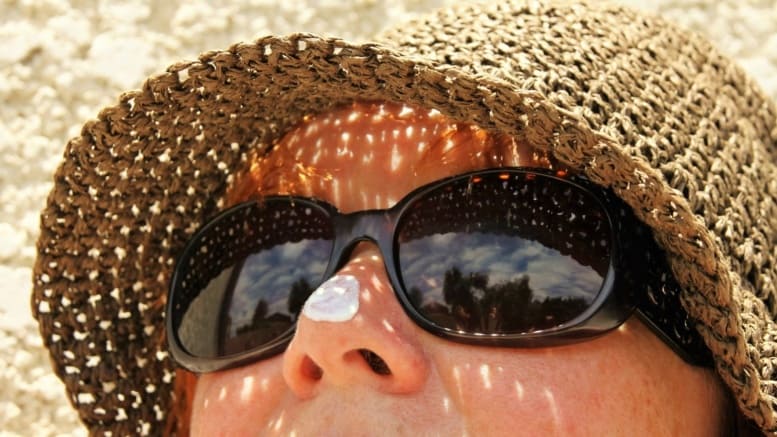The following article was taken from skincare.org/blog.
North Carolina summers can be beautiful, as we all know, but they are also filled with an abundance of sunshine. While the sunshine adds to the appeal of the warmer months, it also takes its toll on residents who have not taken sufficient protection against potential damage to their skin.
Unfortunately, more than 9,500 people are diagnosed with skin cancer every day, more than all other cancers combined. At least one in five Americans will develop skin cancer by the age of 70. It’s a serious disease.
If you (or someone you know) has been diagnosed with two or more nonmelanoma skin cancers, you are part of a special group. You are also, unfortunately, at much higher risk of developing further skin cancers. Here’s why – and what you can do about it.
In February 2017, Australian actor Hugh Jackman posted a photo of his bandaged nose on Instagram, saying “Another basal cell carcinoma.” This was the fifth time he’d required surgery on his nose for this most common form of skin cancer.
If you’re one of the millions of people who have been diagnosed for the first time with either a basal cell carcinoma or a squamous cell carcinoma (also called BCC and SCC, the major nonmelanoma types of skin cancer), you have better than even odds of getting another. About 60 percent of people who have had one skin cancer will be diagnosed with a second one within 10 years, says a 2015 study in JAMA Dermatology.
Your odds increase dramatically if you’ve been diagnosed with a second BCC or SCC (or third, or any other number beyond first). Then you have a 61.5 percent chance of being a repeat customer within just two years. So if you’ve been diagnosed twice, welcome to the high-risk club. Hugh Jackman is in it, and Diane Keaton, and millions of regular folks.
Risky Business
“It’s important for patients to be aware of those statistics, because knowing they’re at higher risk can empower them to take action,” says New York City dermatologist Elizabeth K. Hale, MD, a senior vice president of The Skin Cancer Foundation. “While having previous skin cancers may be the greatest risk factor, knowing your other risk factors is also extremely important.” These include how often you’ve been sunburned, for example, and whether you’ve ever used tanning beds.
Some patients may think it’s no big deal to be diagnosed with a nonmelanoma skin cancer. It’s important to understand that these skin cancers can be a big deal. While basal cell carcinomas almost never spread (metastasize), some can be aggressive, grow quite large and even become disfiguring. And squamous cell carcinomas can sometimes metastasize, spreading to lymph nodes or beyond if not treated early.
Make a Commitment
If you’ve had more than one skin cancer, it’s important to understand and accept that you’re at high risk. Then it’s time to make a lifelong commitment to prevention and early detection. “That is what makes skin cancer unique,” says Dr. Hale. “Patients can really take ownership. You can’t change your genetic predisposition, but there are plenty of things you can do.”
Detect Early
Finding a dermatologist you feel comfortable with who specializes in skin cancer (and accepts your insurance) is a good first step. Create a regular schedule for skin checks, and talk to the doctor about what to look for on your own skin and when to raise a red flag between regular checkups. For example, precancerous spots called actinic keratoses (AKs) can sometimes develop into SCCs, but you can avoid this by finding and treating them early. “It’s a matter of keeping up with these precancers and figuring out what we can do to decrease their chance of getting aggressive and progressing,” says Dr. Hale.
Protect Consistently
First and foremost, Dr. Hale tells her patients to wear a broad-spectrum, high-SPF sunscreen every day, rain or shine, all year round. To help motivate people, she often cites three important studies that came out of Australia. For 20 years, the researchers followed adults who went from just recreational sunscreen use to everyday sunscreen use. They found that regular sunscreen use reduced squamous cell carcinoma by 40 percent and helped prevent actinic keratoses, too. Later they determined that it cut melanoma incidence in half. And in 2013, they showed that regular sunscreen use also reduced signs of skin aging and wrinkles by 24 percent.
To read more about taking precautions against skin cancer, please visit skincare.org/blog.









